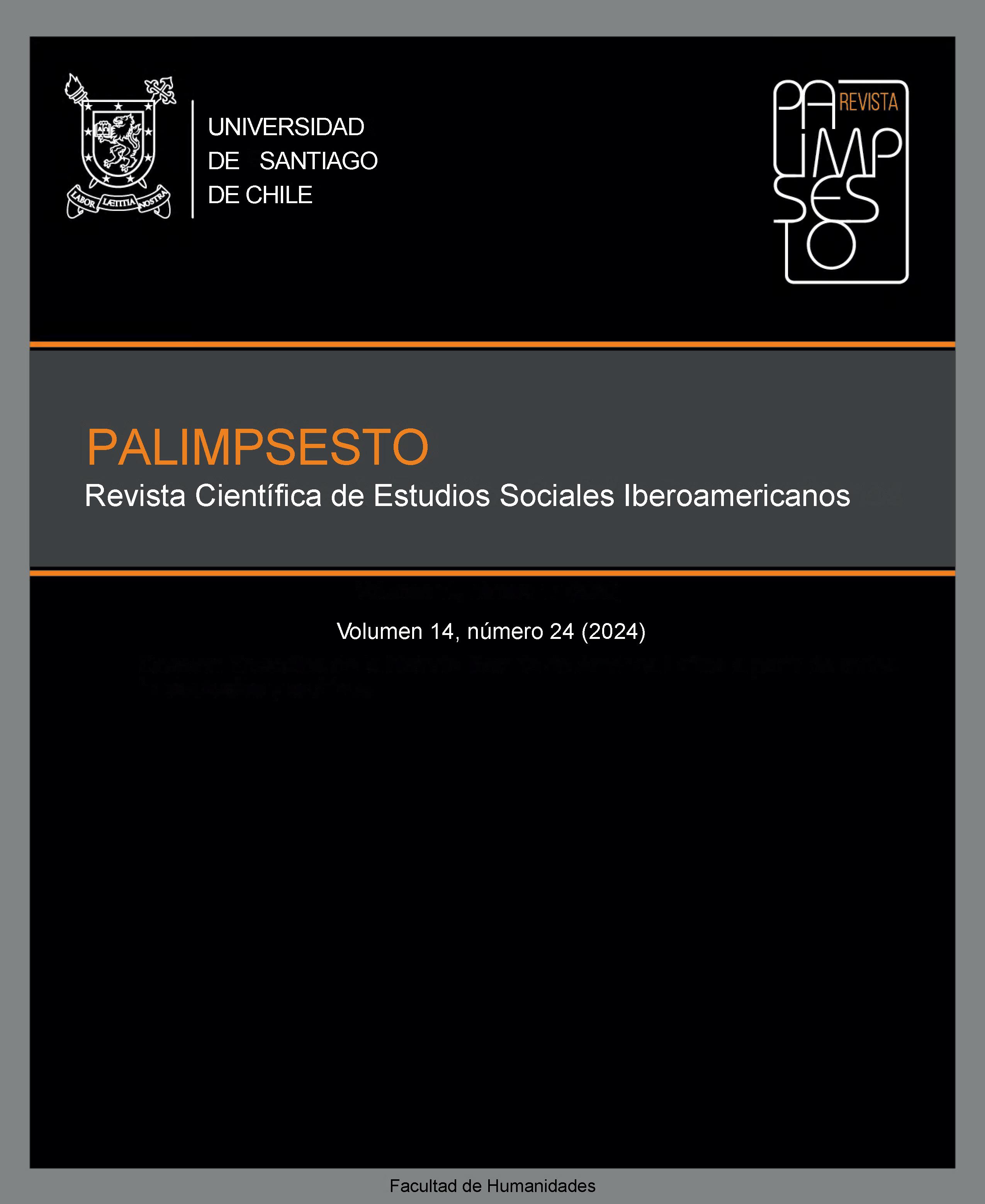Representations of Childhood in the Novel Papi by Rita Indiana Hernández
DOI:
https://doi.org/10.35588/sw02we85Keywords:
Rita Indiana Hernández, Dominican Literature, Representations of ChildhoodAbstract
In this paper, the novel Papi by Rita Indiana Hernández (2005) is analyzed, paying particular attention to the representation of childhood as both a reproduction and a challenge to Western discourses that conceive the child not as an entity in itself, but as a “being in the making” (Castañeda, 2002). The analysis examines how Hernández takes advantage of literary discourse and intermedial language to question political and social constructions of childhood. It concludes that, by the end of the novel, the girl becomes an agent of transformative change (Castañeda, 2002), highlighting her care for her sick mother as ethical and affective labor that contrasts with the consumption dynamics and market logic that governed the spectacularized relationship (Duchesne-Winter, 2008) with her father.
References
Amado, A., & Domínguez, N. (2004). Lazos de familia. Herencias, cuerpos y ficciones. Buenos Aires: Paidós.
Bustamante Escalona, F. (2013). Poéticas caribeñas de la niñería perversa: infancia en textos de Junot Díaz, Severo Sarduy y Rita Indiana Hernández. Revista Aisthesis, 54, 255-266. http://dx.doi.org/10.4067/S0718-71812013000200015
Bustamante Escalona, F. (Comp.). (2017). Rita Indiana: Archivos. Santo Domingo: Ediciones Cielonaranja.
Castañeda, C. (2002). Figurations: Child, Bodies and Worlds. Durham, USA: Duke University Press.
Crivello, G. & Espinoza Revollo, P. (2018). Care labor and temporal vulnerability in woman-child relations. En R. Rosen & K. Twamley (Eds.), Feminism and the Politics of Childhood: Friends or Foes? (pp. 139-154). https://doi.org/10.2307/j.ctt21c4t9k
De Maesneer, R. (2017). Bregando con la autoridad: Papi de Rita Indiana Hernández. En F. Bustamante Escalona (Ed.), Rita Indiana. Archivos (pp.117-126). Santo Domingo: Ediciones Cielonaranja.
Díaz-Zambrana, R. (2017). ¿Una alternativa a la novela del dictador?: Paternalismo, nación y posmodernidad en Papi de Rita Indiana Hernández. En F. Bustamante Escalona (Ed.), Rita Indiana. Archivos (pp. 127-141). Santo Domingo: CieloNaranja.
Donoso Pinto, C. (2020). No somos niños. Representaciones problemáticas de la infancia. Santiago de Chile: Ediciones Universidad Alberto Hurtado.
Donoso Pinto, C. (2016). Infancia e intermedialidad: traducción de la experiencia en El año en que nací, Space Invaders, Joven y alocada y El Futuro. En P. Corro & C. Robles (Eds.), Estética, medios masivos y subjetividades (pp. 293-301). Santiago de Chile: Pontificia Universidad Católica de Chile.
Duchesne-Winter, J. (2008). Papi, la profecía. Espectáculo e Interrupción en Rita Indiana Hernández. Revista de Crítica Literaria Latinoamericana, 34(67), 289-308.
Guerrero, J. (2014). Tecnologías del cuerpo: Exhibicionismo y visualidad en América Latina. Madrid: Iberoamericana Editorial Vervuert.
Harcourt, W. (2008). The Ethics and Politics of Care: Reshaping Economic Thinking and Practice. Review of Political Economy, 1–17. https://doi.org/10.1080/09538259.2023.2241395
Hernández, R. I. (8 de junio de 2016). Caribbean Power. Rita Indiana Hernández en conversación con Carolina Sanín [Archivo de Video]. YouTube. https://www.youtube.com/watch?v=xxVKilkX0Cg
Hernández, R. I. (2011 [2005]). Papi. Cáceres, España: Periférica.
Horn, M. (2017). Seguimos amando a Papi. Subjetividades dominicanas globalizadas en las novelas de Rita Indiana Hernández. En F. Bustamante Escalona (Ed.), Rita Indiana. Archivos (pp. 231-257). Santo Domingo: CieloNaranja.
Large, S. (2018). En busca de espacios de libertad en régimen patriarcal, capitalista y neocolonial: minorías sexuales y raciales en Rita Indiana Hernández. En J.C. Garrot Zambrana, Gómez Muller, A., Soubeyrux, M.H., & Zapata, M. (Eds.), Libertad. Libertades. Estudios de Filosofía, Historia y Artes del mundo ibérico e iberoamericano (pp. 183-204). Madrid: El barco ebrio.
Martin, A., Myers, N., & Viseu, A. (2015). The Politics of Care in Technoscience. Social Studies of Science, 45(5), 625-641. https://doi.org/10.1177/0306312715602073
Martínez Castillo, L. (2020). Papi de Rita Indiana: una dialéctica de la espera. Círculo de Lectores. Recuperado de https://circulodepoesia.com/2020/10/sobre-papi-de-rita-indiana-resena-de-lusdary-martinez-castillo/
Penenrey Navarro, J. (2021). Narrativa del delirio. (De) construcción de la masculinidad en Papi de Rita Indiana. Revista Iberoamericana, 274, 15-28.
Rajewsky, I. O. (2005). Intermediality, Intertextuality, and Remediation: A Literary Perspective on Intermediality. Intermédialités/Intermediality, 6, 43-64. https://doi.org/10.7202/1005505ar
Sibilia, P. (2008). La intimidad como espectáculo. Buenos Aires: Fondo de Cultura Económica.
Downloads
Submitted
2024-06-13Published
Issue
Section
License
Copyright (c) 2024 Monica Simal

This work is licensed under a Creative Commons Attribution 4.0 International License.
- Los autores publicados en Palimpsesto aceptan las condiciones de publicación, distribución, preservación y uso de contenidos contemplados por esta revista a través de la licencia Creative Commons BY https://creativecommons.org/licenses/by/4.0/ que permite compartir el trabajo con un reconocimiento de la autoría original y publicación inicial en esta revista
- Los autores pueden hacer uso sin restricciones de su producción, cumpliendo siempre con lo exigido por la dicha licencia: citar la edición respectiva de esta revista como fuente original.
- Palimpsesto acoge y promueve el cumplimiento de acceso abierto sin ningún tipo de condición o restricción a los textos y datos dados a conocer por ella. Palimpsesto hace suya todas las declaraciones internacionales que favorecen el acceso abierto (Open Access), tales como las de Budapest, Berlín, Bethesda, entre otras.
- Como política de retribución, los autores, cuyos artículos hayan sido aceptados y publicados en PALIMPSESTO, aceptan formar parte del comité de revisores de nuestra revista.
- El autor/a, una vez enviado el artículo, acepta las condiciones de difusión de esta revista explicadas en este apartado.









